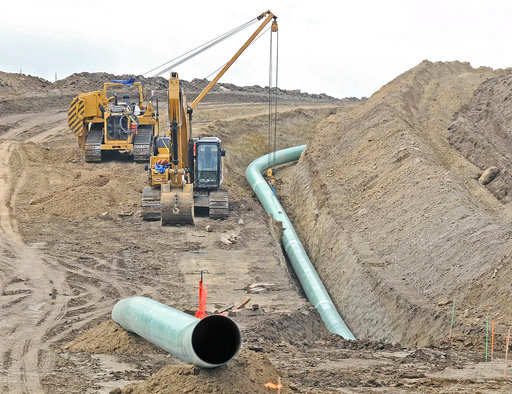INSUBCONTINENT EXCLUSIVE:
By Julian LeeOPEC’s multi-year attempt to steer the oil market by focusing on inventory levels was always like trying to drive a car while
looking only in the rear view mirror
The inventory data is historical and reflects what the market was like a month or more ago
By the time OPEC gets the data, the world has already moved on.
If you thought that was a bad idea, wait until you hear this.
The most
important metric for OPEC and its friends, according to Saudi oil minister Khalid Al-Falih, is the level of investment in future oil
Speaking after the group’s gathering in Jeddah on April 20, he said they all need to promote confidence in the long-term market in order
to attract capital, not to target price.
The world needs to add 4 million to 5 million barrels a day of new production capacity each year to
meet rising demand and offset declines, he said
The industry is far from reaching that goal.
OPEC may be starting to shift its goalposts away from returning inventories to a 5-year average
level, however it chooses to measure that target
Now the group seems to want to keep cutting output until investment in new upstream projects picks up.
But this is a much worse guide to the
state of the market even than inventory levels
Stocks are at least 2 months out of date, but investment plans reflect price levels of 12 to 24 months ago and a whole host of other
The group is abandoning the rear-view mirror in favor of a telescope
Light travels so fast that what you see in the former is mere nanoseconds out of date compared to what the latter reveals – using a
telescope to look at distant galaxies shows you how things were millions of years ago, and not at all how they are now.
Comments from Royal
Dutch Shell Plc Chief Financial Officer Jessica Uhl show how ridiculous it is for OPEC and friends to base current output decisions on oil
“We will not increase capital investment above existing plans in response to the current oil price environment,” Uhl said during the
company’s results presentation for the first quarter of 2018
“Any excess free cash flow will be allocated to net debt reduction and shareholder distributions.”
Other companies take a similar view
France’s Total SA and Italy’s ENI SpA both said that 2018 investment targets would not rise, despite the increase in oil prices.
And
even Saudi Arabia doesn’t look wholly committed to the new regime
According to Al-Falih, though his country won’t stop investing in new oil production capacity if needed, it has no plans to raise it
beyond the 12.5 million barrels a day it currently claims.
That insistence looks perverse, given that the country sits atop some of the
cheapest oil on the planet
Bloomberg’s recent analysis of the accounts of state oil company Saudi Aramco show that it spends less than $4 per barrel to pump
hydrocarbons, compared to similarly rough calculations of around $20 for Exxon and Shell
Yet, Aramco is behaving just like its peers
Oil drilling in Saudi Arabia has been falling even as oil prices have moved in the opposite direction.
Of course, the kingdom could perhaps
stimulate oil company investment by allowing them access to some of those cheap Saudi reserves
There are plenty of ways of doing that without ceding ownership of the oil in the ground - just ask the governments of Iraq, Mexico or a
host of other partners in the OPEC+ group.
The long-term price stability that ministers from Al-Falih to Russia’s Alexander Novak profess
to seek is illusory, as I argued here
In the meantime, the suggestion that they switch from using a metric that is a little bit out of date to one that bears little relation to
market balance risks inflating short-term volatility too.
Of course, while they seek stable oil prices that will last for decades, the OPEC+
group won’t mind a bit of short-term instability, as long as it drives prices upwards, not downwards

